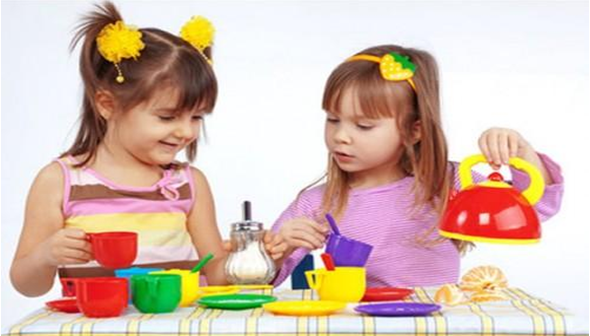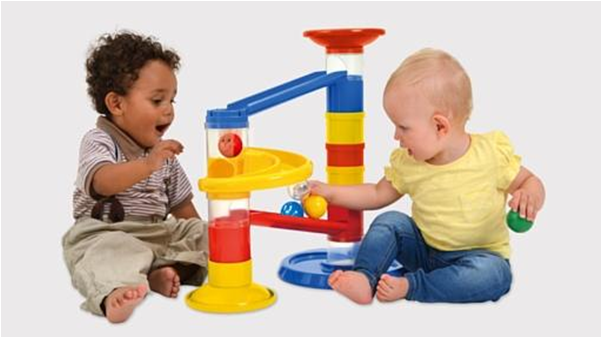What is the purpose of toys?
Published :
12/09/2019 09:12:52
Categories :
Advice from psychologists on raising a child
, List of all pediatricians by city
, Video tips from pediatricians
Remember what your favourite toy as a kid was? The one you didn't sleep without? The one that you carried with you everywhere and that you had fun with for many hours?
Did you know that playing games with your toys have played a huge role in your development and in building you as a complete person? And that thanks to them, you have developed the skills to communicate, to think logically, to be caring, responsible, and empathetic?
Do you find it a little hard to believe that toys can have such a big impact on children's development? Let's look into it, what do you say?
What is the purpose of toys?
All experts believe that children learn the fastest way through play, and toys are their tools through which they learn about the world around them. Through playing, the little ones interact with the environment, study it, and step into the adult world step by step. Also, toys provide them with an abundance of fun, happy moments that they never forget.
With the help of toys, children get the opportunity to get to know the world they live. This, coupled with the fun games they play with the toys, helps them build confidence and absorb what is happening around them with wide-open, curious eyes.
And yet, how exactly do toys help them to develop?
They develop their motor skills
Toys stimulate children to start using their hands, feet, hearing, and eyesight in the first months after birth to discover the shapes and colours of toys. In the first months after birth, babies are not very mobile, and the only way to play with a colourful toy is by trying to touch, reach, grasp, or push it with their hands and feet. And by doing so, they build and strengthen their muscles.
As they move away from grabbing and pulling baby toys, they move on to games with constructors, dolls, or colouring their favourite books. They develop their fine motor skills, and by riding a tricycle, pushing a stroller, or running after a ball in the park, they strengthen their limbs, and they learn coordination and balance.
They help in their emotional development
Toys enhance children's creativity and allow them to express their emotions more easily, develop their imagination, and help them defend positions and make individual decisions. Whether role-playing games such as incarnations of favourite characters, the use of costumes or games with dolls, strollers, or plush toys, children play out life situations that they have seen adults around them do, and they create a completely imaginary world in which they are completely immersed.
They support the social development of the children
In addition to improving children's language skills, toys develop their social skills and pave the way for them to communicate with others. Initially, the little ones play and communicate mainly with their parents, but as they grow older, they focus on children of their age group. By discovering the joy of communicating with their peers and sharing toys with them, children become part of society and develop a sense of belonging.
The exchange of toys, the participation of several children in fun games teaches children some of the most important lessons such as respect, cooperation, and understanding. Through group games, the kids make their first friends and develop their leadership skills.
They help cognitive development
The toys encourage the cognitive development of the children by stimulating and developing their concentration and memory skills, developing their creative thinking, and their ability to solve problems in a non-standard way. These skills are key to their future development as independent individuals.
Toys play a huge role in the proper development of the child. But not all toys are equal, and a toy suitable children of ages 0-1 would not be suitable for a child closer to adolescence.
Purpose of toys according to different age groups
Babies from 0 to 1 years
In infancy, sensory games are best suited to the development of the child's senses and motor skills. In the first months, suitable toys are rattles, soothers, musical toys with different tunes and lights, active gym mats, and more.
Playing with such toys, infants develop coordination between hands and eyes, and as they grow up they gradually understand the causal connections of their actions. While trying to grab the toy, babies understand that in order to be able to reach it, they must point their eyes forward, reach out and reach for it. When playing with toys, babies learn that if they press a button, they will be able to hear different children's tunes. Toys with contrasting colours are also very suitable for babies as they stimulate and develop their eyesight.
Children from 1 to 2 years
When the first year is over, a child is already on the verge of becoming fully mobile. During this period, the little ones learn to walk steadily and some of the most appropriate toys are the ones that stimulate, strengthen, and develop their coordination. Educational toys, small Lego constructors, push carts, and themed animal books are some of the most appropriate toys for this age group.
Children 2+ years
At this age, children are already walking confidently, and it's time for toys that develop their physical activity and their cognitive skills. This is a time when children need to get on their first wheels, namely the tricycle, and learn to balance and coordinate their actions confidently and without problems.
After the age of 2, the kids are very curious and eager to learn new things, so this period is very appropriate for colouring books, the first attempts to spell out mom and dad's letters, and learn to count. In addition to educational toys, other suitable toys for this age are soft toys, musical toys, and more.
Pre-schoolers
When children reach preschool age, besides all their favourite fun toys, it's time to start playing with toys that develop skills such as reading, calculating, writing, drawing, and more. For kids of this age, games that require lettering, calculating, or colouring of drawing books are very suitable. Working with pastels, dyes, and clay is also very useful for kids and develops their creative thinking.
Can such useful articles as toys be dangerous?
Toys can sometimes be dangerous for children. To avoid unpleasant incidents that can lead to a problem with children's health, manufacturers label toys with a label indicating the age of children the toy is intended for.
Thus, anyone who decides to buy a toy for their little one can easily navigate whether or not it is appropriate for the child's age.
What to watch for when buying toys for your children?
No matter what age group your child falls into, the toy you purchase must necessarily have a CE certificate, which certifies that the product has passed all the required quality and safety tests and can be sold in EU-wide outlets.
In addition to the compulsory CE certificate, the toy's label (name and address), the name of the article, and the appropriate age group for the toy should be indicated on the toy's label.
It is also mandatory that the toy has a user manual in Bulgarian.
If possible, choose toys from a physical store so you can look at them on the spot. If you do not have this option, when ordering an online purchase, ask for the shipment to have a "preview" option before paying it to the courier.
Refrain from buying toys from brands and manufacturers you do not know, as the likelihood of buying low quality goods is quite high.
Also, refrain from buying from retailers who cannot prove that the toys they offer are quality and popular manufacturers. Usually, such retailers offer their items at fairly low prices, but we are sure you would not want to buy a dangerous toy for your child just to save some money from buying it.
What is your responsibility as a parent?
After purchasing the toy, you should be responsible enough and not leave the child with it unattended for a long time, because…
Young children, especially little ones, love to pull toys hard or put them in their mouths. Even if the toy is intended for their age group, the child could possibly injure themselves with the toy or swallow some part of the toy, and if you are not around, the situation can become critical.
Also, if your child is playing with constructors or educational games such as chemical kits and guns, rifles, balls, swords, etc., these toys can hurt them.
If you children of different ages, make sure that the older children's toys do not fall into the hands of the younger ones. Toys meant for older children have more variety of parts and babies could possibly disassemble the toy and swallow any part.
Do not allow young children to play with small pieces or pieces of constructors and puzzles, as they are likely to swallow any part.
If you have a baby that crawls, remove the toys from the floor so you can rest assured that the little ones will not reach and pick them up without you noticing.
If the baby uses a walker, be careful where they walk. Secure all drawers and sharp edges, keep it out of stairs, and close doors when moving from room to room. Babies are very nimble and fast with walkers and unpleasant accidents often occur.




 Back
Back